
























































































The dust has settled on our awards, bar a few photos of our big party to come next month, and now is a time of year full of anticipation for the summer ahead, a summer that is going to bear witness, once again, to the strength of the classic boat movement around the world. Let’s take a moment though, to toast South African Kirsten Neuschäfer, who has just become the first woman to win a round-the-world yacht race; in her case, the gruelling singlehanded Golden Globe, which takes participants around the world via the old clipper route reprised by Sir Francis Chichester and Robin Knox-Johnston in the late 1960s. Kirsten didn’t have to dress as a man to do this, unlike the first woman ever to circumnavigate the globe in 1776-78, Jeanne Baret, whose story we covered last month. And – late news if you’ve not heard it – but our publisher, Chelsea Magazine Company, has been sold to The Telegraph, whose scoops include Germany’s invasion of Poland in 1939! We’ve got a scoop nearly as good – it’ll have to wait for next month though.
COVER STORY 4 . SKERRY NICE
e big skerry cruiser Plym, named a er her builder and restored in NZ



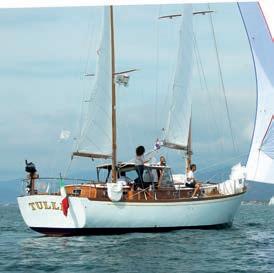
12 . OUT AND ABOUT
In Australia for the extreme 18-footers and at Antigua for the Classic
COVER STORY
22 . BEST OF BOTH WORLDS
1960s Italian motor sailer from the Sangermani yard
32 . TOM
e old father ames of river and coastal boat restorations


BAG



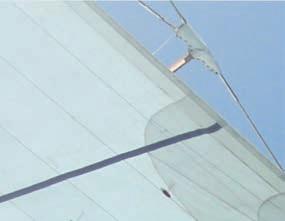







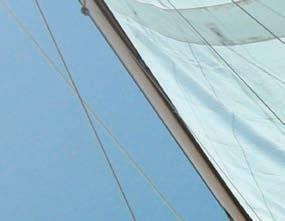


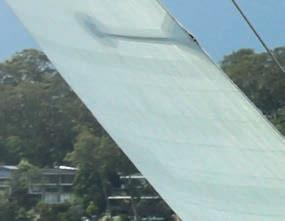




The svelte skerry cruiser Plym has found a new lease of life after a modernising re t for the 10th owner to fall in love with her looks
WORDS AND PHOTOS NIGEL SHARP
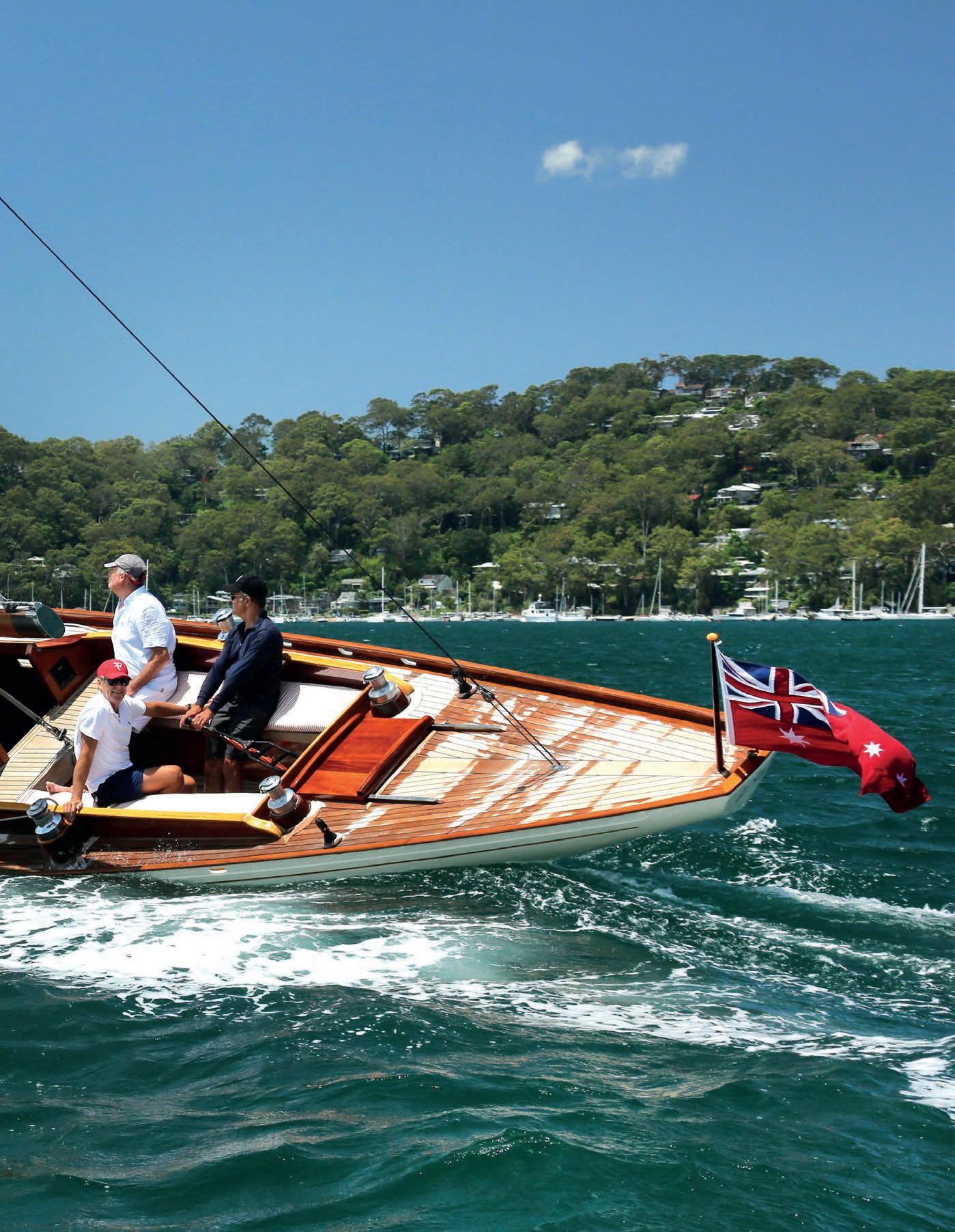
How many more voyages Veritas will make and how many more tales she’ll have to tell is impossible to prophesy… She has been becalmed and assaulted alike by the elements, and weathered all. She has been raced and cruised, loved and abused, yet above everything she remains a ship capable of sailing anywhere in the world… Can you wonder that I love her?” These words could have come from any of the 10 people who have, to date, owned Veritas – originally named Manuela II and now Plym – but they were actually written by Stephen Wiest whose father was her fifth owner. And how much more of the world she will sail in the future is anybody’s guess, but she has certainly covered a lot of it so far.
Manuela II was designed by Swede Erik Salander and built – engineless, and with Honduras mahogany planking on oak frames – by August Plym in Saltsjobaden near Stockholm in 1948. Salander specialised in designing yachts to the Scandinavian Square Metre rule, producing a great many designs between 15- and 120-Square Metres. Manuela was commissioned by Alf Nobel – an heir of Alfred Nobel who had invented dynamite and established the famous prizes that bear his name – who asked Salander to design something of an anomaly, a 61 Square Metre. Nobel only had her for a couple of years before selling her to John Monserrat, a Connecticut banker who happened to be visiting Sweden. Montserrat renamed her Flicka and sailed her to New England with his wife, their son and a paid hand. At some point he sailed her back to Sweden and then to the USA again. In the late 1950s, he sold her to a Chicago yachtsman called Peacock, who renamed her Feather and took her via the New York canal system and the Great Lakes to Lake Michigan (by now her first engine had been installed). She was then based on the Great Lakes until the late ‘70s, during which time she had two more Milwaukee owners: Joseph Bonness, a construction company owner – who already had a 22 Square Metre – who renamed her Maria; and Irvin Wiest, a watch maker and former navy submariner who renamed her Veritas and replaced her petrol engine with a Westerbeke diesel. During this time she was extensively raced and cruised throughout the Great Lakes.
She was then bought by John Calley, vice chairman of the Hollywood film company Warner Brothers, who took her to California, presumably by road. He had previously owned another Plym-built boat, a 65ft (19.8m) S&S yawl called Olinka. “I made the mistake of selling her in 1976 and have regretted it ever since,” he wrote to Stephen Wiest. In the same letter he referred to his new boat as Manuela, so it was presumably her next owner, Burke Sawyer, who changed her name to Plym. Sawyer was a sailmaker who founded Watt Sails in the USA and who raced Plym regularly. In 1993, not only was Plym awarded the Peggy Slater Memorial Trophy for winning line honours in the Wooden Hull Yacht Club’s annual One More Time Regatta, she also won the trophy for Best Brightwork.
Facing page: The topsides may no longer be varnished but there is still plenty of deck brightwork to take care of
Neville Crichton is a New Zealand-born car dealer who has lived in Australia since the 1980s. He cofounded Sensation Yachts and Alloy Yachts, has owned several high-profile yachts called Alpha Romeo, and recently bought the J-Class Rainbow. In 1992 he was in San Diego for the America’s Cup when he first saw Plym. “I thought ‘what a beautiful boat’,” he told me. “I rowed over to have a look and saw Burke Sawyer on board, and said ‘if you ever want to sell her, call me’. A couple of years later Burke did just that.” Neville paid US $45,000 for her.
Plym arrived in Sydney Harbour on the deck of the bulk carrier Swiftness in May 1995. Neville sailed on her just a couple of times “to get an idea of what we wanted to do”, then immediately put her in the hands of boatbuilder Mark Richards. Plym’s rudder had always been hung off the back of her relatively short keel, and her propellor shaft was offset to one side, the combination of which made for tricky manoeuvring under power. A new spade rudder was fitted further aft, and the shaft was brought through the centreline. Neville decided that the varnished topsides wouldn’t stand up to the Australian sun so the outside of the hull was sheathed with glass and epoxy, then painted. At the same time, the teak deck was renewed.
Plym’s rig had been modified several times over the years. Originally, she was a masthead cutter with a self-tacking staysail, although it would appear that she sometimes sailed as a sloop with a large genoa on the inner forestay; Bonness changed it to a masthead sloop and lengthened the boom by about a metre, but later shortened the mast by about the same amount; and then Calley gave her Sparcraft aluminium spars with a marginally fractional rig. Neville described this rig as “on its last legs” when he took delivery of the boat, and so it was replaced with a ¾ fractional rig with increased sail area, and with carbons spars with swept- back spreaders to negate the need for running backstays. The spars were painted to look like wood by “an old guy who did the interior of trams,” said Neville.
Neville then kept Plym on a swinging mooring in sight of his house on Sydney’s Point Piper. “I used her for looking at more than anything,” he said. “I did sail her a bit but not a lot. A couple of us would sometimes go out for a sail on a Saturday morning, and for a race on a Wednesday night, and I did the odd classic regatta in her. She was just a bit of fun.”
In 2017, Neville sold Plym to Inga Parks who had “an amazing feeling of comfortableness and ease” as soon as she went on board. “It took me five minutes to decide to buy her,” she said. She kept her on a swinging mooring at Woolwich, near where she had learned to sail as a young girl, and for the next three years or so she and Plym “pottered around the harbour” with her
PLYM
DESIGNED Erik Salander
BUILT Gustav Plym, 1948
LOA 57ft 1in (17.4m)


LWL 40ft 8in (12.4m)
BEAM 2.8 metres
DRAFT 2.3 metres
SAIL AREA 970 sqft (90m2)
DISPLACEMENT 11 tonnes
two teenage sons and various friends. But then, while Inga’s work as a skin cancer nurse was “becoming huge”, she was all to aware that Plym “wasn’t receiving all the time and attention that she needed and deserved”, so she put her on the market.
Steve Girdis was already a very experienced yachtsman, having owned a Melges 24 (which he still has), a Sunfast 52 and a J24, which he has cruised and raced extensively. In the 60s and 70s, his father and uncle had owned and restored 30 Square Metres on which he had often sailed. He had been looking far and wide (including Maine, USA) for a classic style yacht, but none of the boats he looked at were as attractive as Plym which he had always admired when seeing her moored off Point Piper; and he thought she was “just the right size – big enough to be impressive and small enough to be sailed by a small crew.” So in October 2020, he bought her, then followed Neville’s lead by putting her into a boatyard after just a couple of sails. This time she went to Bruce Gault and “a very enthusiastic team” in a shed in southern Sydney.
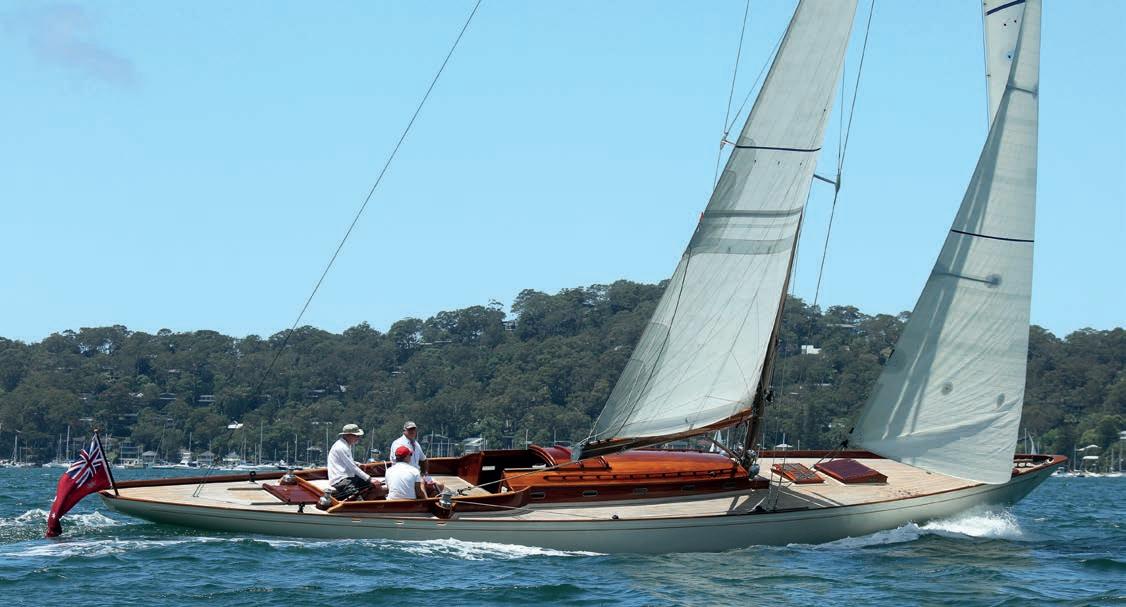
Steve and Bruce had a pretty clear idea of what needed doing. The main issues had been caused by the increased loads that the carbon rig had put on the boat. “Everything was creaking around and moving,” Steve said. “Water was pouring into the join between the coamings and the carlins, and when looking along the gunwale you could easily see that the sides of the boat had been pulled up.” To solve the leaks, first the covering boards were removed around the coachroof coamings and foredeck hatches, and a section of the coamings at deck level was routered out. Epoxy glass was applied to the routered sections and to the exposed plywood subdeck before new covering boards were fitted, then new internal handrails were bolted through the coamings and carlins. This also involved renewing some of the teak decking adjacent to the coamings,
and all of the brightwork was stripped back to bare timber and recoated. The structure in way of the mast was then significantly increased by the addition of three new laminated ring frames, through one of which the chainplates were bolted as well as through the hull. Furthermore, the beamshelf was partially reinforced with additional members on its inboard face, through which the jib sheet tracks were bolted. The mast step was reinforced and modified to suit the new ring frames, then regalvanised.
A fourth new laminated ring frame was fitted immediately aft of the companionway, an area where loads were generated by the backstay, the mainsheet, the aft end of the keel and now a new engine. This is a Yanmar 3YM30 AEC 30HP engine with an SD sail drive and three-bladed folding Gori propeller (replacing a Volvo 30HP with conventional shaft and a feathering propellor) fitted immediately aft of the keel and is faired into it. Bruce hadn’t previously undertaken such a job and was initially concerned about removing parts of the structure to accommodate the sail drive, but he soon realised that the answer lay in applying the same principles as fitting a bow thruster into a carvel boat which he has done many times. “I reckon that by the time we finished it was probably stronger than it was originally,” he said.
Other work included comprehensive upgrades and renewals of electrics (including new BEP Contour panels and Victron Lithium Smart house batteries), navigational instruments (including a new Coursemaster CM950 autopilot with CMLD212 hydraulic linear drive), plumbing (including hot and cold running water with an Isotherm 40-Litre stainless steel tank, and an electric toilet), new rigging by Infinity Rigging and new North 3Di jib and genoa. By now the faux wood finish on the mast wasn’t looking as good as it had done, so it was painted a brown metallic colour.
Then clockwise: The margins and some of the decking around the foredeck hatches have been renewed; New ring frames in the mast area; The saloon looking forward; Headsail sheet winch

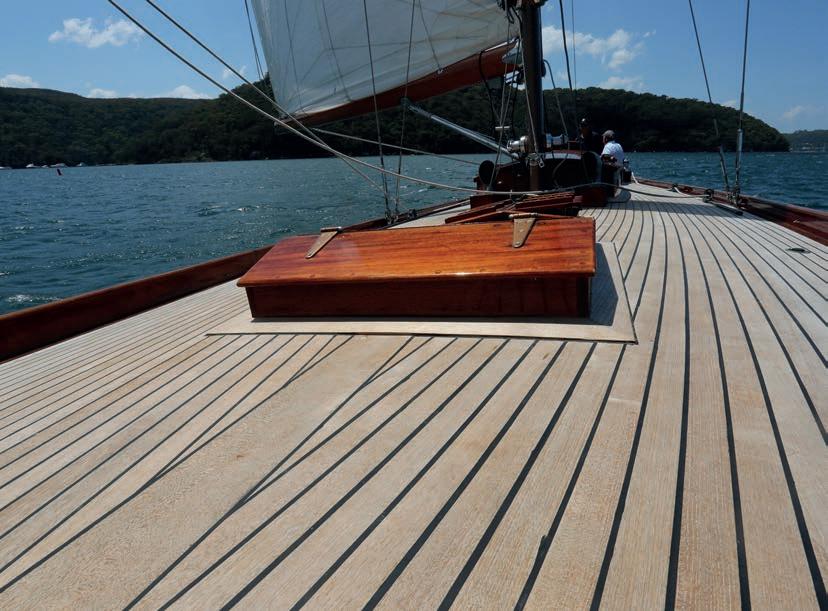



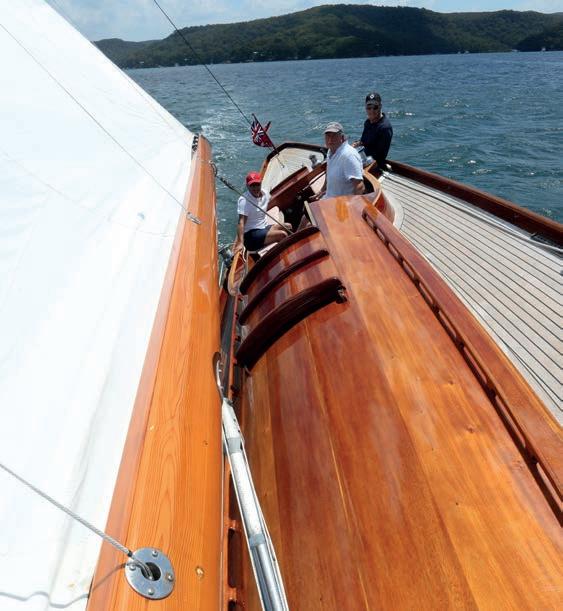 Top left and top right: Owner Stephen Girdis at the helm with his friends Ray Pearson and Matthew Banks
Top left and top right: Owner Stephen Girdis at the helm with his friends Ray Pearson and Matthew Banks
The work was finished a year almost to the day after it had started, but halfway through, Steve found himself thinking: “Oh my God, this thing is never going to be finished. How on earth are we going to put it all back together.” I told him he was by no means the first to be tormented in such a way, and that he won’t be the last.
For most of the year, Steve keeps Plym at the Cruising Yacht Club of Australia’s marina at Rushcutters Bay on the southern shores of Sydney Harbour. For a period every year he is obliged to move her to make way for visiting yachts before the start of the Sydney Hobart race, and he then keeps her at Pittwater, a beautiful estuary not dissimilar to Sydney Harbour but without a massive city. He is aware that seriously racing a big boat is quite a commitment, but as he believes that one-design classes provide the best racing, he has a Laser dinghy just for
Above: Plym pressed hard going to windward
Below: The original drawings showing the keel-hung rudder
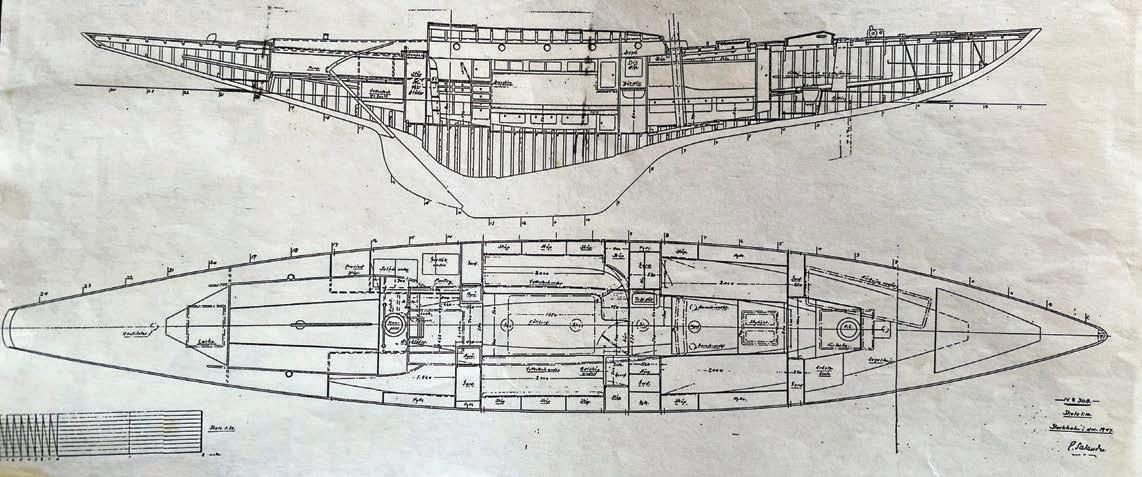
that purpose. But in racing Plym without a spinnaker in twilight races in both Pittwater and Sydney Harbour, he enjoys the fact that she only needs three or four crew, and she has won a few races during the short time he has had her. But he was also keen to make sure that Plym was fitted out for easy and comfortable cruising, albeit for just the occasional night on board. The various new domestic systems facilitate this, while the rig allows him to sail just with his wife, or even singlehanded. “We can do six knots upwind with just the main up,” he said.
Steve concedes that with her carbon rig, sheathed hull, sail drive and so on, Plym is now more “spirit of tradition” than the classic yacht she once was. Nonetheless I found that there was something very special about photographing and sailing this stunning boat in the naturally beautiful surroundings of Pittwater. “Plym is special,” Steve agreed, “and the fuss she creates is fun and amazing.”
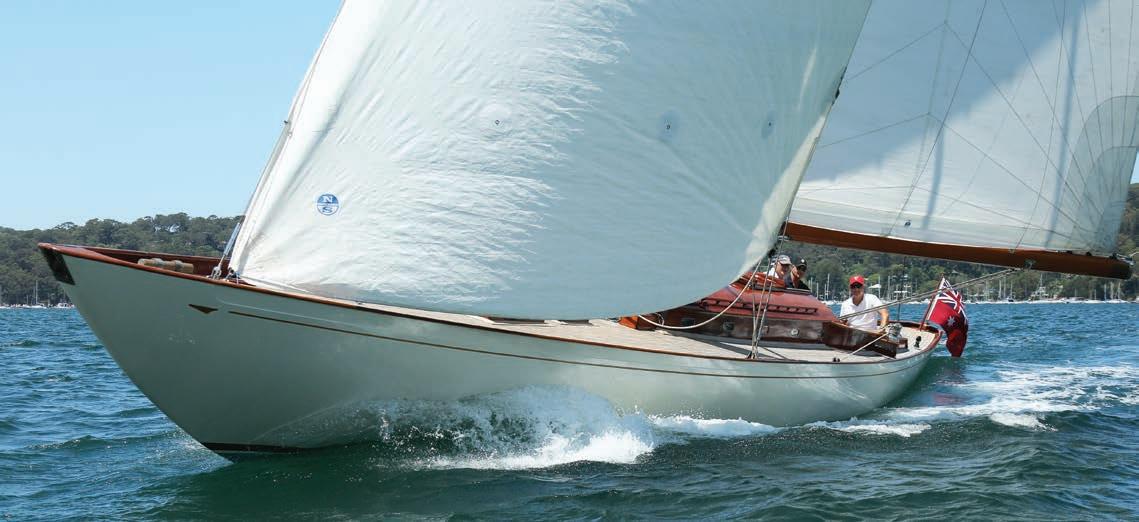
The main regatta will be a three-race series held over Saturday and Sunday in Dovercourt Bay, Harwich Harbour, and the Orwell and Stour estuaries. An optional early evening race will take place on Friday in which entrants will compete for separate prizes.








To enter online and for event details, visit www.syhclassicregatta.co.uk


PHOTOGRAPHS NIGEL SHARP
On the first weekend in February, the historical Sydney Harbour 18 Footers held the third and final race of its Australian Championships. While there are no original boats still in commission, 11 replicas of boats originally built between 1906 and 1950 were produced between 1993 and 2013, and these are based at the Sydney Flying Squadron in Kirribilli on the north side of Sydney Harbour. Going into the last race, three boats were within two points of each other: Yendys having had a second and a first, The Mistake a first and third, and Alruth a third and second. With a forecast of “a horrible westerly 10 to 15kts, meaning 0 to 20 with big shifts,” according to Ian Smith – Britannia’s builder, owner and skipper – most boats opted for a number 2 or even a number 3 rig, while Yendys set her biggest mainsail and number 2 jib. Furthermore, with three-times Contender word champion Barry Watson on the helm, Yendys established an early significant lead after making a bold but perfect start on port tack. She then stayed comfortably in front all the way to the finish, thus clinching the championships and the Galloping Ghost trophy.


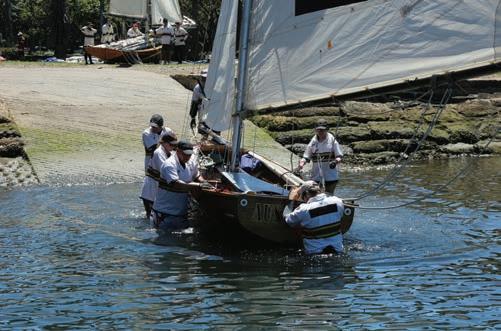

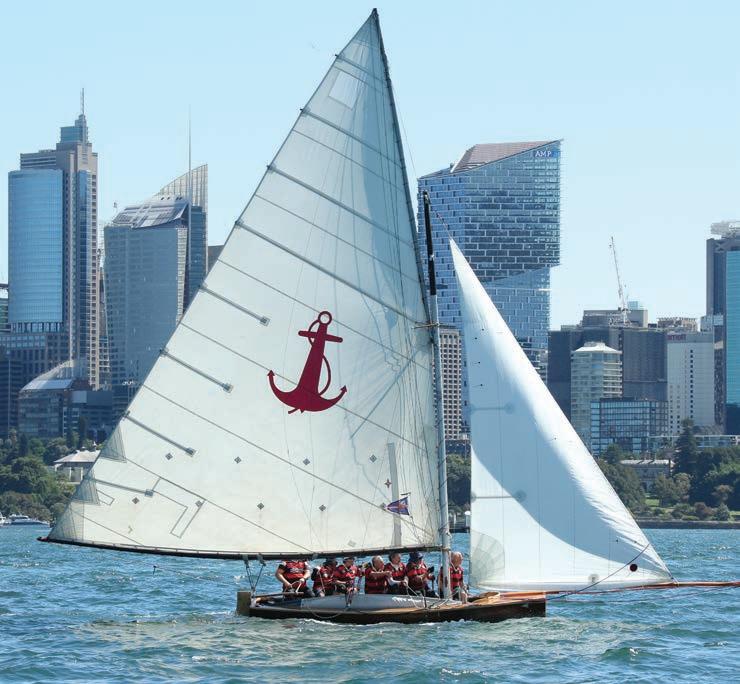
7
1 launching Australia
2 Tangalooma trying to slow down as she approaches the start line 3 Australia IV on her way to the start

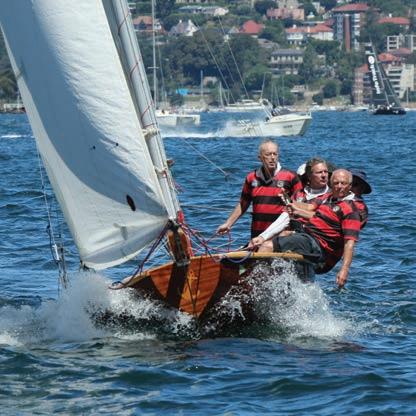


4 Alruth
5 Yendys
6 Australia IV and Britannia on the first beat
7 The Mistake
8 Yendys
When many of the Superyachts have cast o their lines in April and sailed for the Med or the United States, Antigua hosts the much-loved Classic Regatta for all wooden boat lovers. This 34th year, 36 boats gathered from many distant shores to sail the unusually-calm blue waters of the Caribbean.




With activities and free dockage returning to Nelson’s Dockyard, now a UNESCO World Heritage Site, the beautifully-restored Georgian buildings made an apt backdrop for the regatta. National Parks welcomed everyone with fire dancers, steel drums and stilt walkers and traditional rum punch. The popular music night was around the captans with talented sailors and their instruments and their sea shanties and their rum…
The weather was uncharacteristically light and southerly this year, but there was enough breeze for even the heaviest of schooners to sail well and courses and start times were adjusted accordingly. Five boats sailed in the singlehanded race and following days saw the Old Road, Butterfly and Kenny Coombs’ favourite race – the Canon – run up and down the coast with the entire fleet passing each other with admiring looks and cheers of appreciation.
Yachts ranged from wooden Carriacou sloops built on the beach in the Grenadines to the 178ft (54.3m) Arthur Holgate-designed three-masted schooner Adix. There was a new modern class to include boats such as the Cal 40 Huey Two, First 35 Cricket and the 48ft (14.6m) S&S Swan Montana and two Nonsuch 33s. The 1999 40ft (12.2m) steel replica Cornish lugger Eleanor B summoned the spirit of the regatta. After the last race, all yachts join in the Parade of Classics through English Harbour, with rigs and crew dressed overall to horns & canons and cheers of delight from ashore.
Edwardian afternoon tea is served at the Admiral’s Inn with gig racing and dinghy tomfoolery before the pricegiving ceremony which is held outside the museum in the Dockyard. Video highlights and a slideshow of the photographers’ best work is shown after sunset and the crew share their stories and show o their trophies and drink from the traditional kegs of rum they have won from all their hard work. Matt Barker’s 1930 65ft (19.8m) cutter The Blue Peter won overall.
Full details and results at www.antiguaclassics.com